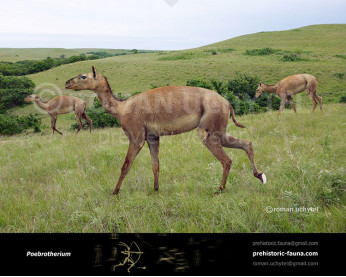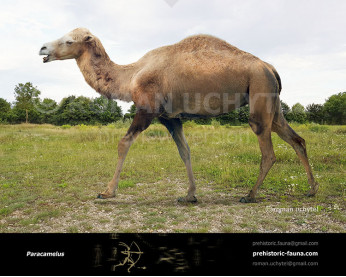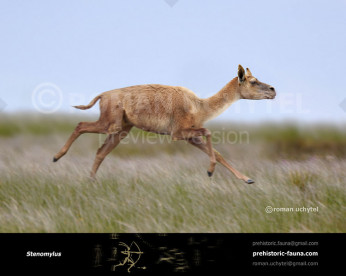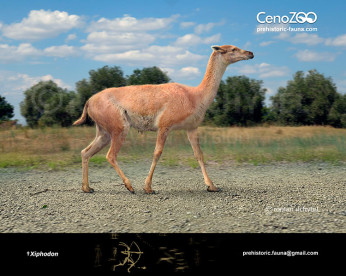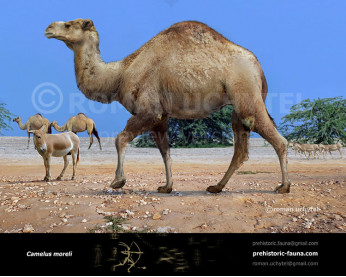Procamelus
492492
Procamelus (†Procamelus (Leidy, 1858))
Order: Artiodactyla
Family: Camelidae
Time period: from the Middle to Late Miocene 16.0—5.3 mya (North America)
Size: 2,3 m in length, 130 cm in height, 95-120 kg of weight
Typical representative: Procamelus occidentalis (Leidy 1858)
Procamelus is an extinct genus of camel endemic to North America. It lived from the Middle to Late Miocene 16.0—5.3 mya, existing for approximately 11 million years.
It had long legs designed for speed, and was about 1.3 metres in height at the shoulder, slightly smaller than a modern llama. Unlike modern camelids, it had a pair of small incisor teeth in the upper jaw. The remaining teeth were large and adapted for eating tough vegetation. The shape of the toes suggests that it possessed foot pads, like modern camels, unlike earlier forms of camelid, which generally had hooves. This would have helped it walk over relatively soft ground. It had a straighter neck than Oxydactylus or Aepycamelus.
Оплата
У Вас є кілька зручних способів купівлі зображення: кредитна чи дебетова картка Visa, Mastercard, Maestro; PayPal або банківський переказ
Procamelus (†Procamelus (Leidy, 1858))
Order: Artiodactyla
Family: Camelidae
Time period: from the Middle to Late Miocene 16.0—5.3 mya (North America)
Size: 2,3 m in length, 130 cm in height, 95-120 kg of weight
Typical representative: Procamelus occidentalis (Leidy 1858)
Procamelus is an extinct genus of camel endemic to North America. It lived from the Middle to Late Miocene 16.0—5.3 mya, existing for approximately 11 million years.
It had long legs designed for speed, and was about 1.3 metres in height at the shoulder, slightly smaller than a modern llama. Unlike modern camelids, it had a pair of small incisor teeth in the upper jaw. The remaining teeth were large and adapted for eating tough vegetation. The shape of the toes suggests that it possessed foot pads, like modern camels, unlike earlier forms of camelid, which generally had hooves. This would have helped it walk over relatively soft ground. It had a straighter neck than Oxydactylus or Aepycamelus.

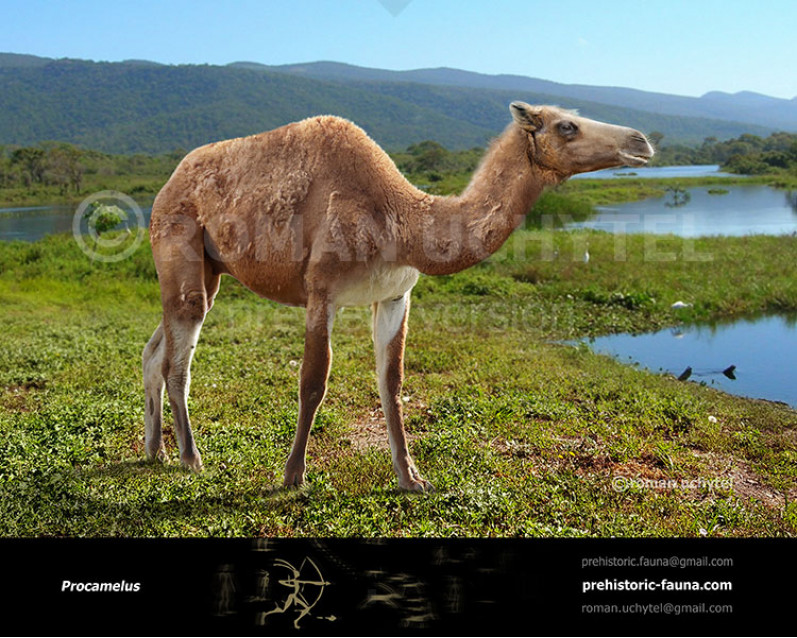
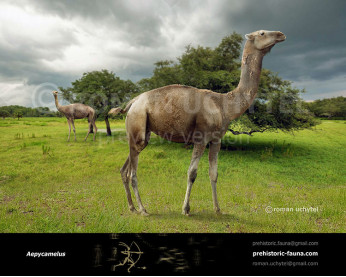
-346x277.jpg)
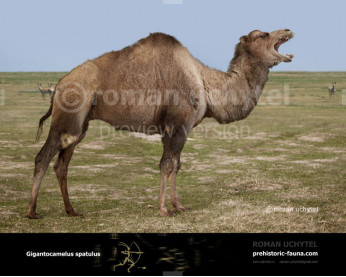
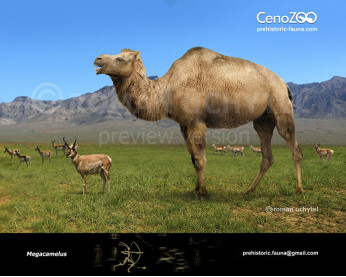
-346x277.jpg)
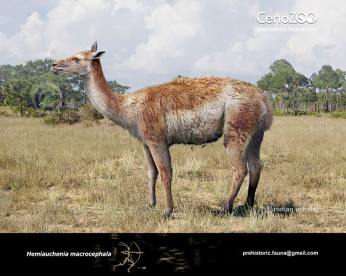
-346x277.jpg)
